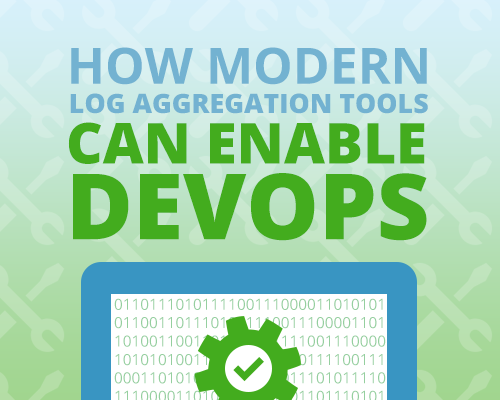Last updated at Fri, 03 Nov 2017 17:55:49 GMT
Rob Thatcher is Co-founder and Principal Consultant at Skelton Thatcher Consulting.
Summary: the pricing of tools or licenses for log aggregation can have a significant effect on organizational culture and the collaboration between Dev and Ops teams.
Modern tools for log aggregation (of which Logentries is one example) can be hugely enabling for DevOps approaches to building and operating business-critical software systems. However, the pricing of an aggregated logging solution can affect the adoption of modern logging techniques, as well as organizational capabilities and cross-team collaboration. We need to choose our log aggregation tools carefully to make sure that we don’t introduce unintended barriers or silos driven by unhelpful pricing.
Avoid ‘Singleton’ Log Aggregation That Exists Only in Production
Organizations considering commercial tooling for log management are often sold on the idea that the single most important location for log collection is the Production (Live) environment. Whilst first class logging facilities for live environments are hugely valuable, if we fail to provide log message collection in upstream environments (QA, Dev, Test, Pre-Prod, etc.) we miss out on a significant opportunity to discover how the application and infrastructure behave before reaching Production.
One of the most common causes of these ‘singleton’ tools – tools that exist only in Production – is that the tool is licensed per server. We see that per-server licenses tend to drive down the number of servers on which the tool (or agent) is installed; in this scenario, licenses are purchased only for Production machines, leaving upstream environments with no log aggregation. Contrast this with other approaches to tool licensing, such as charging per GB of data transferred, or number of messages/queries per month, which provide a much better scaling model for the tool, and encourage teams to use the tool in Dev or Test environments as well as in Production.
If our log aggregation tool is available only in Production, developers tend to view logging as ‘just an Ops thing’ and have little incentive or reason to care about improving log messages or adding useful metrics. However, if developers and operations people all use the same tooling for searching logs across all environments (Dev, Test, Prod) then they can begin to collaborate on a common view of the system behavior, gaining valuable insights into improving operability.
Selling the Benefits of Log Aggregation
Working with a variety of clients over the past 18 months, we have found that the benefits of log aggregation are often not well understood by technical teams.
Time and time again we speak to developers and operations people who are astonished at how easy it is to search for and find information in logs once those logs are in a central log aggregation tool.
They never want to go back to manual log ‘scraping’ again!
It’s therefore crucial when evaluating log aggregation tools to find products that can as much demonstrate the fundamentals of log aggregation as show off a specific vendor’s product. The Free tier or 30-day demo version of the tool needs to have sufficient capability so that we can demonstrate end-to-end value: event streams from a whole set of servers, server-level metrics, integration with time-series graphing tools and dashboarding tools, and pre-baked queries (we particularly like Logentries for its features here). Teams often need to convince budget holders to pay for what seems initially like a packed version of existing free tools but – if demonstrated well and adequately evangelized – rapidly becomes an obvious new core capability.


